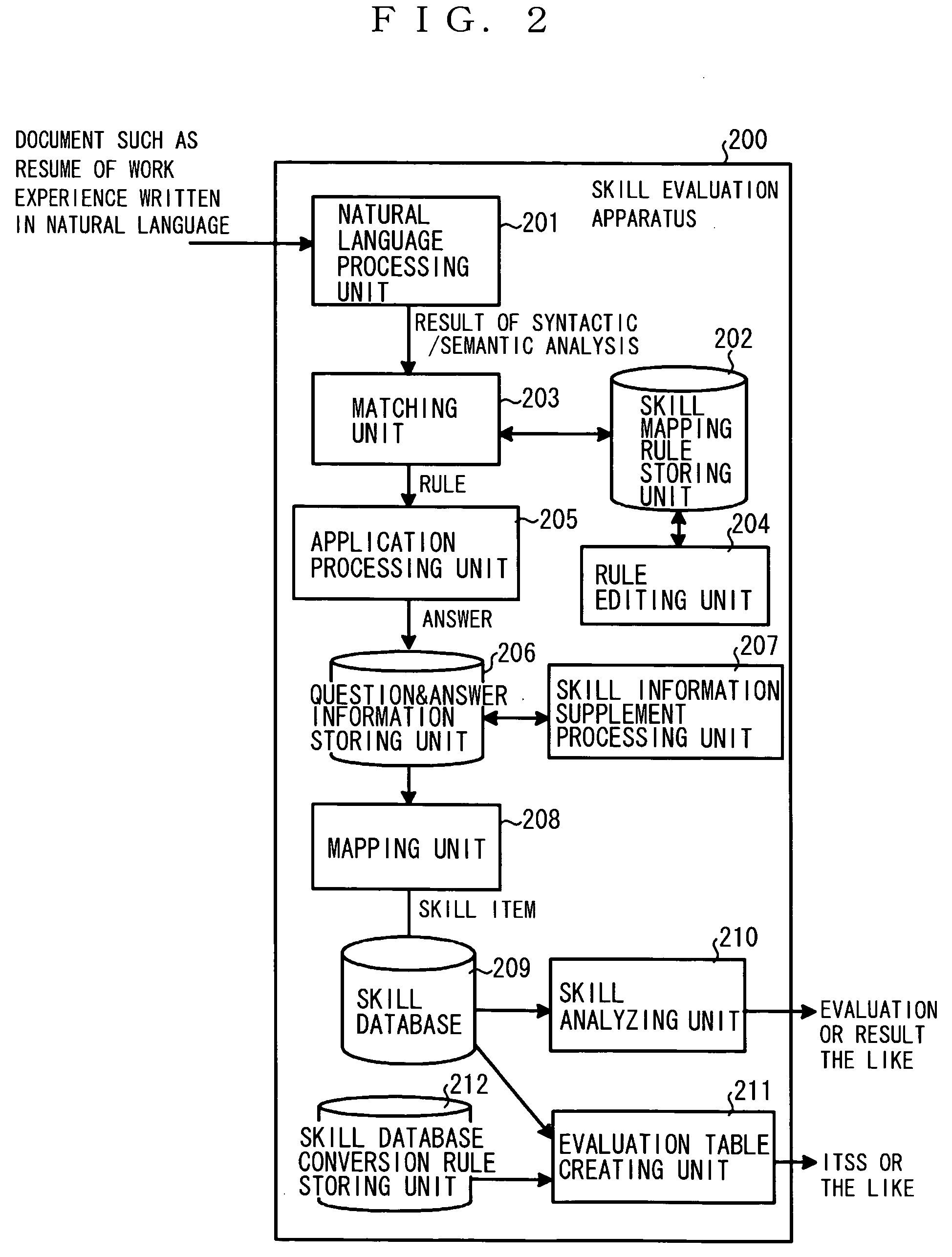Apparatus for ability evaluation, method of evaluating ability, and computer program product for ability evaluation
a technology of ability evaluation and ability, applied in the field of ability evaluation, can solve the problems of not being able to distinguish professional products and techniques that are not known to the general public, inability to gather detailed information, and almost impossible to ask about “a specific company name"
- Summary
- Abstract
- Description
- Claims
- Application Information
AI Technical Summary
Benefits of technology
Problems solved by technology
Method used
Image
Examples
first embodiment (
1: First Embodiment (Skill Evaluation Apparatus)
[0065] In the description of the first embodiment hereinbelow, with reference to FIGS. 1 to 10, a concept of the skill evaluation apparatus according to the first embodiment ([1-1: Concept of Skill Evaluation Apparatus]), a structure of the skill evaluation apparatus according to the first embodiment ([1-2: Structure of Skill Evaluation Apparatus]), a process sequence of the skill evaluation apparatus according to the first embodiment ([1-3: Process Sequence of Skill Evaluation Apparatus]), advantages of the skill evaluation apparatus according to the first embodiment ([1-4: Advantages]), and other embodiments of the skill evaluation apparatus ([1-5: Other Embodiments of Skill Evaluation Apparatus]) are described.
[0066] Hereinbelow, the term “syntactic / semantic structure” is also referred to as a “dependency structure” or a “result of syntactic analysis,” and the term “morphological structure” is also referred to as a “result of morph...
example 1
Using Semantics:
[0147]
If =[header(kaihatsusuru|jissousuru|tegakeru)]|-(objective case)[semantics (gyoumu-sisutemu)]+[header (wo)]Then=QA(3)&(answer=Y)&(answer=headercorresponding to [semantics(gyoumu-sisutemu)])(JE)If =[header(develop | implement | deal with)]|-(objective case)[semantics (business system)]Then=QA(3)&(answer=Y)&(answer=headercorresponding to [semantics(business system)])(EE)
example 2
Using OR for Header:
[0148]
If =[header(kaihatsusuru|jissousuru|tegakeru)]|-(objective case)[header(gyoumu-sisutemu | keiri-sisutemu |jinji-sisutemu |ABC-sisutemu)]+[header(wo)]Then =QA(3)&(answer=Y)&(answer=headercorresponding to [header(gyoumu-sisutemu|keiri-sisutemu|jinji-sisutemu|ABC-sisutemu)])(JE)If =[header(develop | implement | deal with))]|-(objective case)[header(business system | accounting system | personnelsystem| ABC-system)]Then =QA(3)&(answer=Y)&(answer=headercorresponding to [header(business system | accounting system | personnelsystem| ABC-system)])(EE)
[0149] Thus, the header corresponding to the names of the systems in the above-described dependency structure and “Y” (YES) are extracted as the answer information to the question No. 3 (“Do you have an experience of developing a business system?”) and associated therewith.
[0150] When the actually given sentence is “2003 nendo ni keiri-sisutemu wo menbaa 5 nin no riidaa toshite kaihastushita (JE)” (“I developed an ac...
PUM
 Login to View More
Login to View More Abstract
Description
Claims
Application Information
 Login to View More
Login to View More - R&D
- Intellectual Property
- Life Sciences
- Materials
- Tech Scout
- Unparalleled Data Quality
- Higher Quality Content
- 60% Fewer Hallucinations
Browse by: Latest US Patents, China's latest patents, Technical Efficacy Thesaurus, Application Domain, Technology Topic, Popular Technical Reports.
© 2025 PatSnap. All rights reserved.Legal|Privacy policy|Modern Slavery Act Transparency Statement|Sitemap|About US| Contact US: help@patsnap.com



